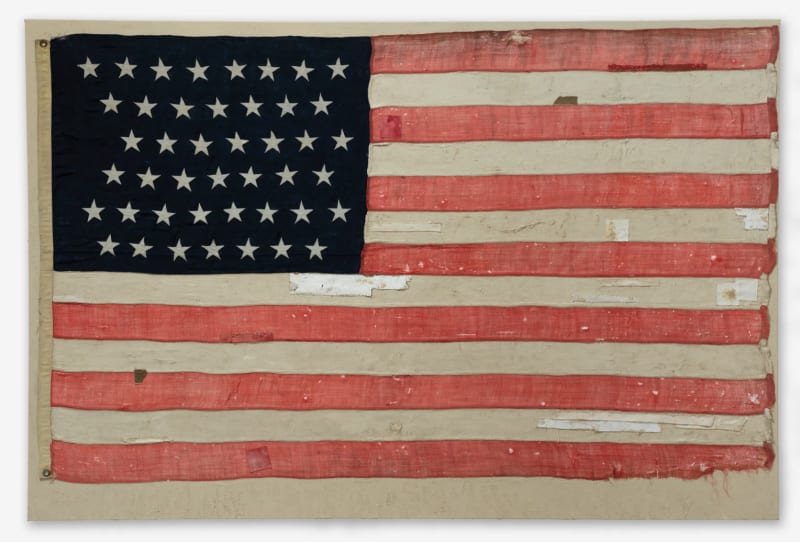Layers and what is hidden underneath are recurrent themes in your work. How are you thinking about visibility and opacity?
I’m trained as a painter. I work via accumulation. From my fabric work of the ’70s to the work I do now, it’s additive. Whether you call it painting or sculpture, that’s what I do. In my early “Bags” and “Presences,” the hanging strips of paint-saturated cloth are three-dimensional brushstrokes. Accumulation over time, over space—that sense of building from the inside out—is very much about agency and occupying space.
The works of the last 15 years exist in a third space between painting and sculpture. They build up paint slowly and intimately in thick, near-monochrome layers. The painting becomes a metaphor for the body. There was a period where the paintings were a dark phthalo blue, at times looking black or iridescent. The color and surface were fugitive, or what we could call queer. Recent paintings are mostly lighter in color, emphasizing surface incident. Lumps, bumps, protrusions, seams, splits, stains, and grommet holes formally open up the pictorial space. At the same time, they suggest body orifices, or wounds, with the paint acting as a healing poultice. When I wrap a painting, the straps often wrap around the edges to the back. You can think of that as bandaging, binding, bondage, but it is also embracing the painting. It’s about strengthening—like an athlete bandaging a knee.
How do surface and texture factor in?
In my recent paintings, light and shadow are crucial. The surfaces are very much in relief—interesting words!—returning to the idea of edges. When I think of edges in painting, I don’t just think of the perimeter; I also think of the painting surface as an edge between art and life, those bumps pushing up from underneath, seams splitting open, or what looks like body fluids oozing out of the holes. I’m thinking conceptually about the underlayers of paint and color. I’m really interested in what’s buried and asserting itself onto or through the top surface. The shadows have to be there, as do the fabric’s seams and loose threads. Seams are connectors. I like the connections to be visible. It’s what I call a “survivor aesthetic,” making a whole out of pieces.
All these visual strategies have meaning attached to them. I’m using the materials and how they are manipulated to bring social and political content into the work, which is actually quite formal. For example, a piece of fabric that’s cut has a different feeling than one that’s torn and fraying. Materials have histories and memories, whether they’re traditional art materials or what we would call nonart materials.
The metaphorical relationship between material and concept is fundamental in your work. How are you working with language?
Words come and go in my work. I mostly use them to suggest connections or to tell a story that needs to be told. But I also use words in relation to various visual strategies. For example, in my series “Bandaged Grids,” I affix bandages over a grid of holes that suggest wounds. The fabric strips that bandage the painting body are mostly horizontal. When I look at those, I often think of them as sentences—words covering up and over. In the “Double Cross” paintings, doubling is about sameness and difference—and, therefore, queer desire. But “double cross” also suggests betrayal. I am playing with words. I use visual imagery with meaning attached to it in the same way that we attach meaning to text.
In my abstract paintings, voices assert themselves from underneath the surface skin of paint. To me, that’s a political statement. But there are times I do a piece that is more overtly political. There are a few of these works in the SITE exhibition—Bandaged Flag (2021), Patched (2022), or Voices I (2023). Voices I, for example, is composed of pieces of vintage linoleum with fragmented quotes from the French lesbian feminist writer Monique Wittig, one of which asks, “what have you done with our desire?” Both ways of working are about the same thing: voice, censorship, agency.

